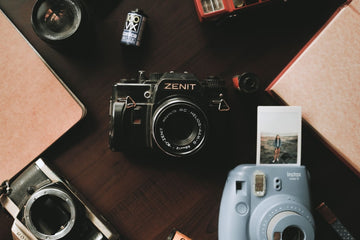5 Tips to Improve Your Landscape Photography Composition
Feb 28, 2020

Taking a quick snapshot is simply not enough when you have an interesting location or subject for landscape photography. You want to maximize the photo’s impact by considering its composition. The beauty of landscape photography is that you can take as much time as you need to improve the end result. You can consider different compositions and viewpoints for the image and choose the one that is the strongest.
There are many tips that can help you improve your landscape photography composition. However, keep in mind that not all of them will be suitable for every photo. Still, you should keep these in mind when strong composition is a priority:
- Use the Rule of Thirds
The rule of thirds is one of the most important landscape photography compositional aids to use. To use it, split your photo into thirds vertically and horizontally, creating a 3x3 grid. Place the important objects in the photo on these lines, especially where the lines intersect. Most landscape photographs look best with either the top two thirds of the photo occupied by the sky or the bottom third by the landscape, or otherwise the top third occupied by the sky and the bottom two thirds by the landscape.
- Frame the Subject
Seeing your subject through a frame is a powerful way to draw the eyes of the viewers to what’s important. You can use many things to frame the subject e.g. tree branches, tent door, window, etc. When choosing a frame, make sure that it is not too bright. Also, make sure that you focus on the subject rather than the frame. This is because the sharpest point in the photograph is the one human eye naturally travels to.
- Incorporate Leading Lines into Your Photo
By incorporating leading lines into your photo, you will help guide the eyes of viewers to the subject. A mountain ridge, coast line, or road are some of the examples of leading lines. It is recommended that you incorporate a diagonal leading line into your photograph as it can show the distance between elements in the background and foreground, hence adding depth to your photo.
- Show Scale
When you capture a 3D world in a 2D image, the size of the subject and depth perception can get lost in the transformation. So, showing scale becomes extremely important. You can do this by including an object that the viewer will know the general size of e.g. a house, car, person, etc. The recognizable object next to the subject will emphasize the subject’s actual size. In this way, you will give the photograph a greater sense of scale.
- Simplify
Simplicity is key in photography. Think carefully about what elements you are including in your image. If an element does not add to the photo, try and remove it. This is because if a photograph does not have a clear subject and it is too busy, the viewer will not know where to focus their attention and where to look. This can lead to the viewer becoming frustrated. You can prevent this by simplifying and making sure that your photo has a clear subject.
These are the tips that will help improve your landscape photography composition. Keep in mind that only some of these will improve the composition of a certain photograph. That’s why you should take your time and analyze the different possible compositions for an image before you decide on the best one.





